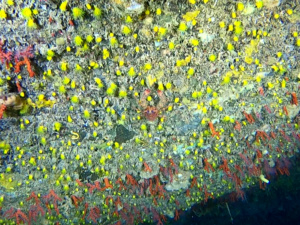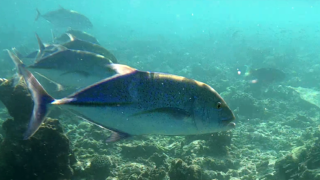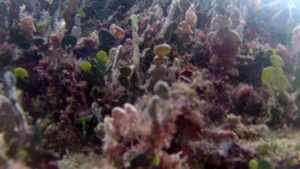Triglia linea punto Parupeneus barberinus intotheblue.it 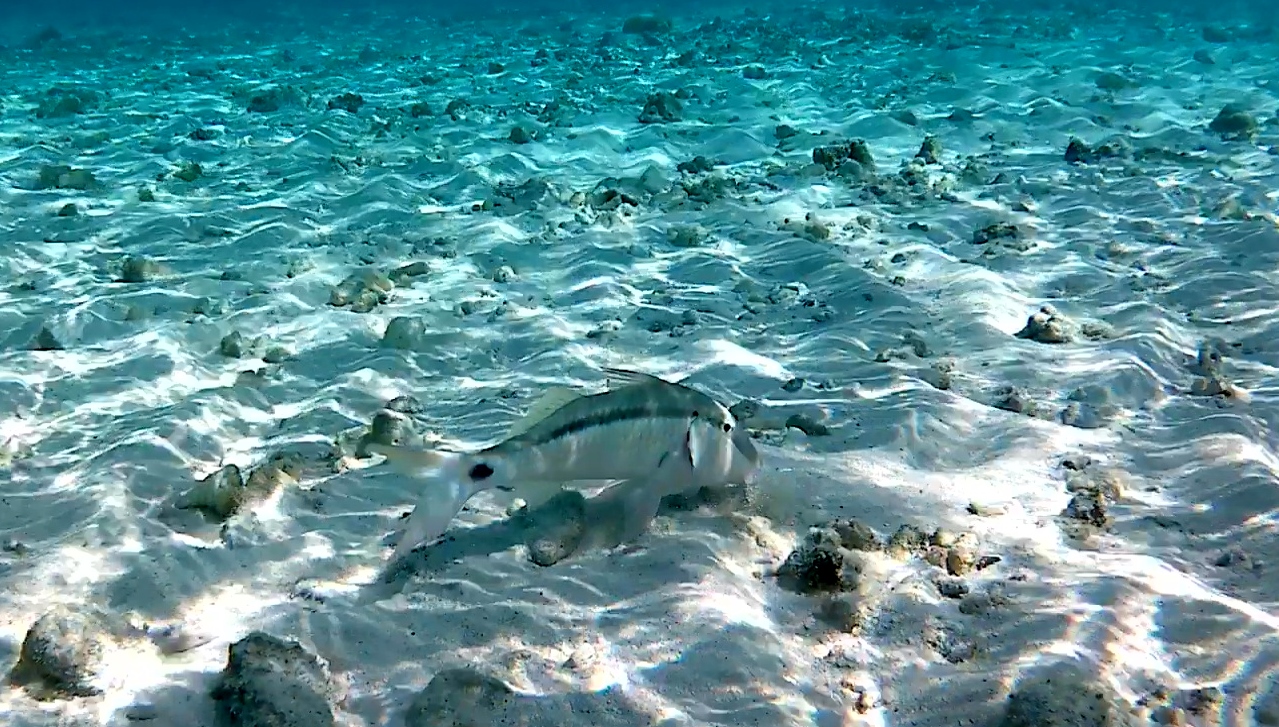 The dash-and-dot Goatfish (Parupeneus barberinus) is a species of goatfish native to the Indian and Pacific oceans.
The dash-and-dot Goatfish (Parupeneus barberinus) is a species of goatfish native to the Indian and Pacific oceans.
The dash-and-dot goatfish has the twin chin barbels typical of goatfishes. The body color is white with a black to dark brown stripe (dash) reaching from the upper lip through the eye and along the body, followed by a black spot (dot) at the base of the caudal fin. Above the stripe, the body has a yellowish tint. Dash-and-dot goatfish from deeper water will usually have red stripes and spots. They can reach a maximum length of 60 cm, making them the largest of the Mullidae family.
The dash-and-dot goatfish is considered one of the most abundant species of Parapeneus, and is found in the Indian and western Pacific Oceans, the east coast of Africa, and the Gulf of Aden to Micronesia and southern Japan to Australia. It is found off reef flats and lagoons on sandy bottoms up to 100 m deep.
Dash-and-dot goatfish spend most of their time moving slowly over the bottom searching for prey with their barbels. Their diet includes worms, small crustaceans, and small fish.
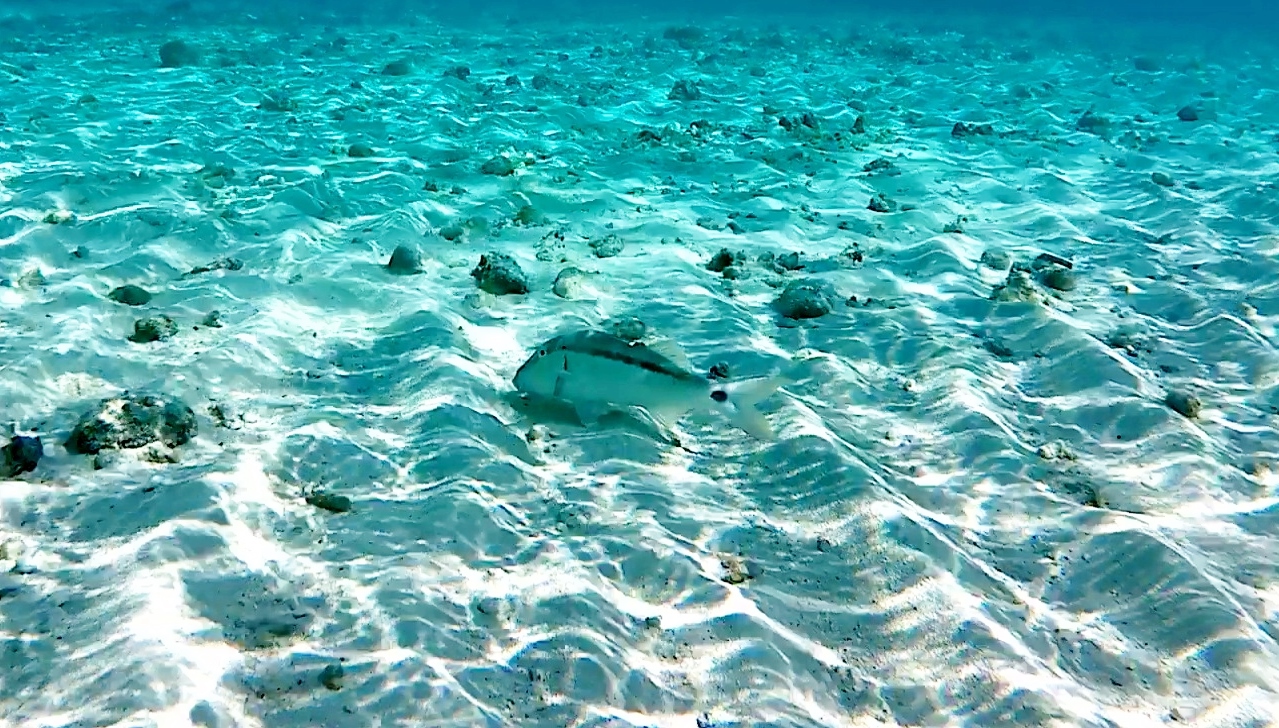
triglia linea-punto – dash-and-dot goatfish – intotheblue.it
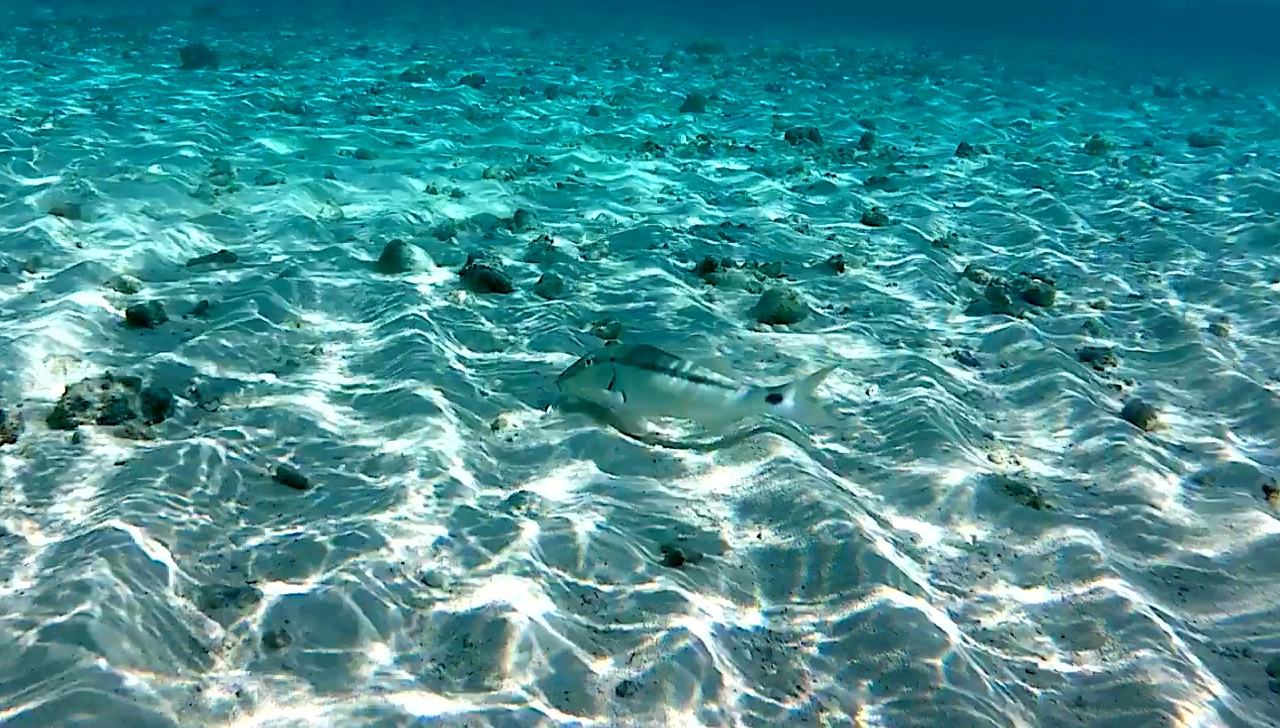
triglia linea-punto – dash-and-dot goatfish – intotheblue.it
Goatfishes are characterized by a pair of chin barbels which contain chemosensory organs and are used to probe the sand or holes in the reef for food. Their bodies are deep and elongated, with forked tails and widely separated dorsal fins.
Many goatfishes are brightly colored. The largest species, the dash-and-dot goatfish (Parapeneus barberinus), grows to 60 cm in length; most species are less than half this size. Within the family are six genera and about eighty-six species.
Goatfishes are distributed worldwide in tropical, subtropical and temperate waters. Goatfishes occur in a range of habitats. Most species are associated with the bottom of the littoral, but some species of Upeneus can be deep; for example the goatfish Upeneus davidaromi can be found to depths of 500 m. Tropical goatfishes live in association with coral reefs.
Goatfishes are pelagic spawners; they release many buoyant eggs into the water which become part of the plankton. The eggs float freely with the currents until hatching. The larvae drift in oceania waters or in the outer shelf for a period of 4–8 weeks until they metamorphose and develop barbles, Soon thereafter most species take of bottom-feeding life-style, although other species remain in the open water as juveniles or feed on plankton. Juvenile goatfishes often prefer soft bottoms, in seagrass beds to mangroves. They change habitat preference as they develop, coinciding with changes in feeding habits, social behavior and the formation of association with other species. Most species reach reproductive maturity after one or two years.
Goatfish species are an important fishery in many areas of the world and some species are economically important. Triglia linea punto Parupeneus barberinus intotheblue.it
(extract from Wikipedia)
 English
English Italiano
Italiano
